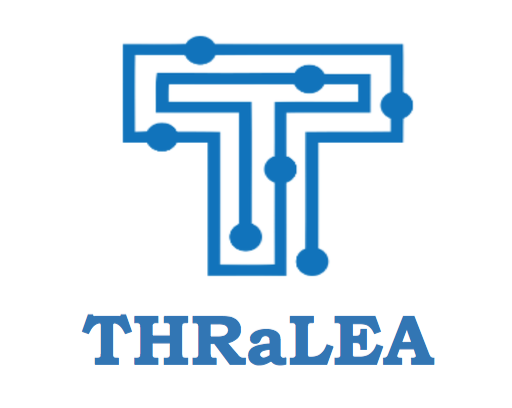Safety Procedures
The safety of your guests and team members is critical to the success of your organization. Your commitment to providing a safe environment for both your greatest asset (your staff) and your guests, has to be on top of your priority as a restaurant operator. It is essential that each Manager, Supervisor, and Team Member take an ongoing interest in the prevention of accidents and provide leadership that will inspire everyone to work in a safe manner each day. You have to stress enough the need to be aware of opportunities to improve the safety of your workplace.
Each member of your team is responsible to report any situation that he/she considers unsafe. It’s everyone’s obligation to make a safe and better workplace by reporting unsafe conditions and practices.
Position-Specific Safety Training:
Different positions require different safety procedures (i.e. Prep requires proper cutting techniques to avoid accidents). Position-specific training is completed before any new team member begins his/her position at your company. Your staff should follow the guidelines set forth by your company and including both preventative measures and first aid procedures.
Safety Standards
Most accidents can be avoided by simply being more careful. We can all help to make our workplace a safe and healthy place to work just by following these basic safety principles.
Don’t ever operate a piece of equipment until your trainer has demonstrated and communicated all safety issues.
Immediately report to a manager any unsafe or potentially hazardous condition, such as broken or splintered chairs or tables, defective equipment, unsafe tools or knives, or broken glass.
Keep aisles and passageways clean and free from obstruction. Do not let any objects remain where someone can trip on them.
Don’t ever rush so much that you risk hurting yourself or others. Hurrying is a major cause of accidents.
Lifting & Carrying
Before attempting to lift an item, first, determine if you can do so safely. If you are not sure you can easily lift it alone, ask for help!
When you lift a heavy object, lift with your legs rather than your back.
Bend your knees, keep your arms and back straight, and your chin in.
Lift by gradually pushing up with your legs. Avoid jerky motions.
Lift without twisting. Turn your feet, not your hips or shoulders.
Keep objects close to your body.
Utilize 2 or 3 people to lift the object if it is awkward or too much for 1 person
Slipping and Falling
Pick up everything spilled or dropped on the floor
Remove or report any object blocking an aisle
Walk, never run
Wear sensible shoes with non-skid soles and moderate-height rubber heels
Use a stepladder for hard-to-reach things. Chairs, crates, and other makeshifts are dangerous
Report any leaky or dripping equipment
DON’T IGNORE any potential slipping danger. If you cannot fix the situation immediately, cover the dangerous spot with a Wet Floor sign, and notify your Manager. Never leave a dangerous situation unattended.
Using Knives
If you have not used knives or are a beginner...let your Manager and trainer know so you can receive the proper training before you begin using any knife
Always wear a cutting glove
Always cut away from your body
Always use a cutting board
Keep knives sharp
Carry a knife by holding it at your side with the point down to the floor and the blade facing to the rear (don’t press the knife against your leg)
Never leave knives in a sink, they could cause cuts to anyone reaching into soapy water
Don’t try to catch a knife if it falls...let it fall. Then pick it up.
Equipment Use
Make sure you know how to correctly operate every machine you use
Know the hazards of the equipment before using it
Make sure the machine is turned off before you plug it in
Before cleaning equipment, ensure the unit is off and unplugged
Storage of Chemicals
Chemicals should be stored in a designated area where they cannot contaminate or spill onto foods, linens, dishes, utensils, food equipment, or any food contact surfaces. Many chemical manufacturers recommend that chemicals be stored in a cool, dry location. The product label should be reviewed for specific storage instructions. Chemicals must always be stored at least 6” off the floor and in containers that clearly identify their chemical contents.
Chemical Usage and Safety
It is important to always follow the manufacturer’s instructions when using chemicals to clean or sanitize. Cleaners and sanitizers will be most effective when used at concentrations and temperatures specified by the chemical manufacturer. This information can usually be found on the product label. Occupational Safety and Health Administration (OSHA) requires that this information be available to employees at all times. To satisfy this requirement, chemical manufacturers produce Safety Data Sheets (SDS)
The Safety Data Sheets contain:
The manufacturer’s contact information
Physical and chemical properties of the product
Information about the safe use and handling of material
Fire, explosion, reactivity, and health hazard information
Information about personal protective equipment that may be needed
Emergency procedures and first aid
The date the SDS was prepared
In addition, OSHA requires that all employees be trained about the chemicals used in the facility. This training should include the safe use of the chemicals, any hazards associated with the chemicals, the location of the SDS binder, and how to read an SDS sheet. The person in charge should have a written
